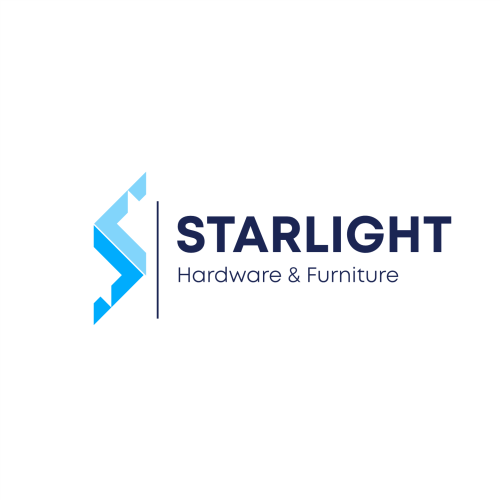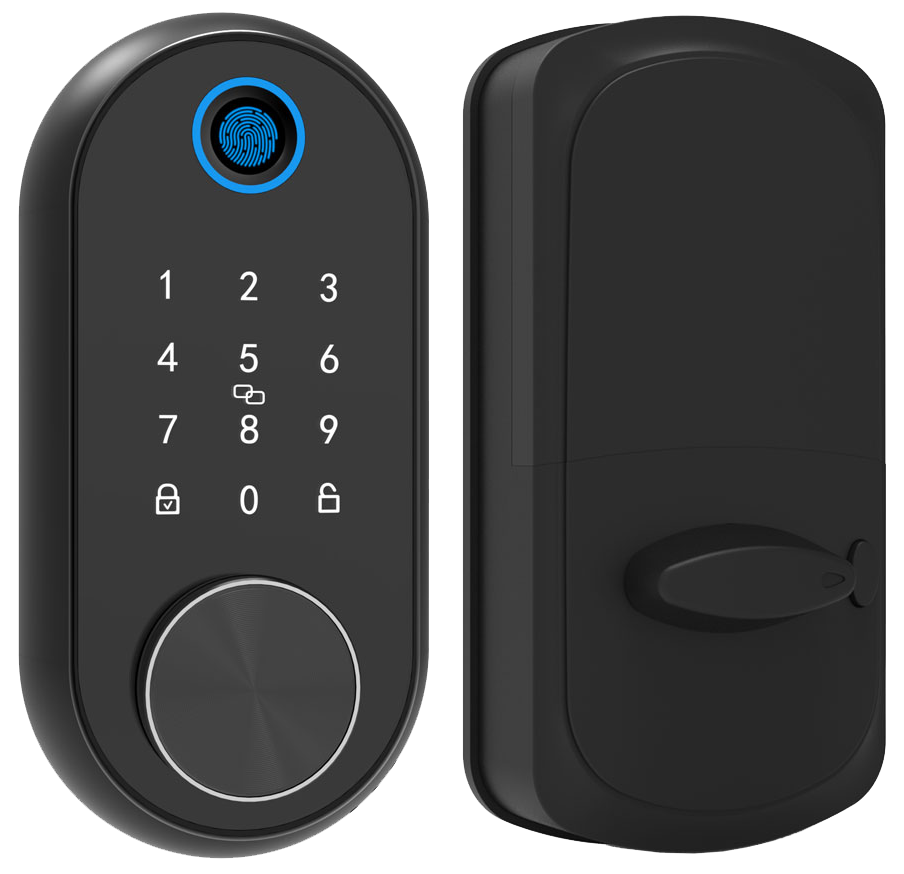Think your lock can stand up to a determined thief?
Most old deadbolts buckle with just a few pounds of pressure.
And that leaves your shop, your life’s work, wide open.
We’ll walk you through five Grade 1 smart door locks.
They bring a solid metal faceplate, real-time audit trails, and cloud-based control in seconds.
You’ll find features like biometric fingerprint sensors (a reader that checks your unique fingertip pattern) and auto-relock after every entry.
Want to know a secret? These locks log every move like a digital bouncer.
It’s like having a guard who never sleeps.
Let’s dive in and lock down your store with confidence.
Choosing Smart Door Locks for Retail Stores: Essential Benefits & Requirements
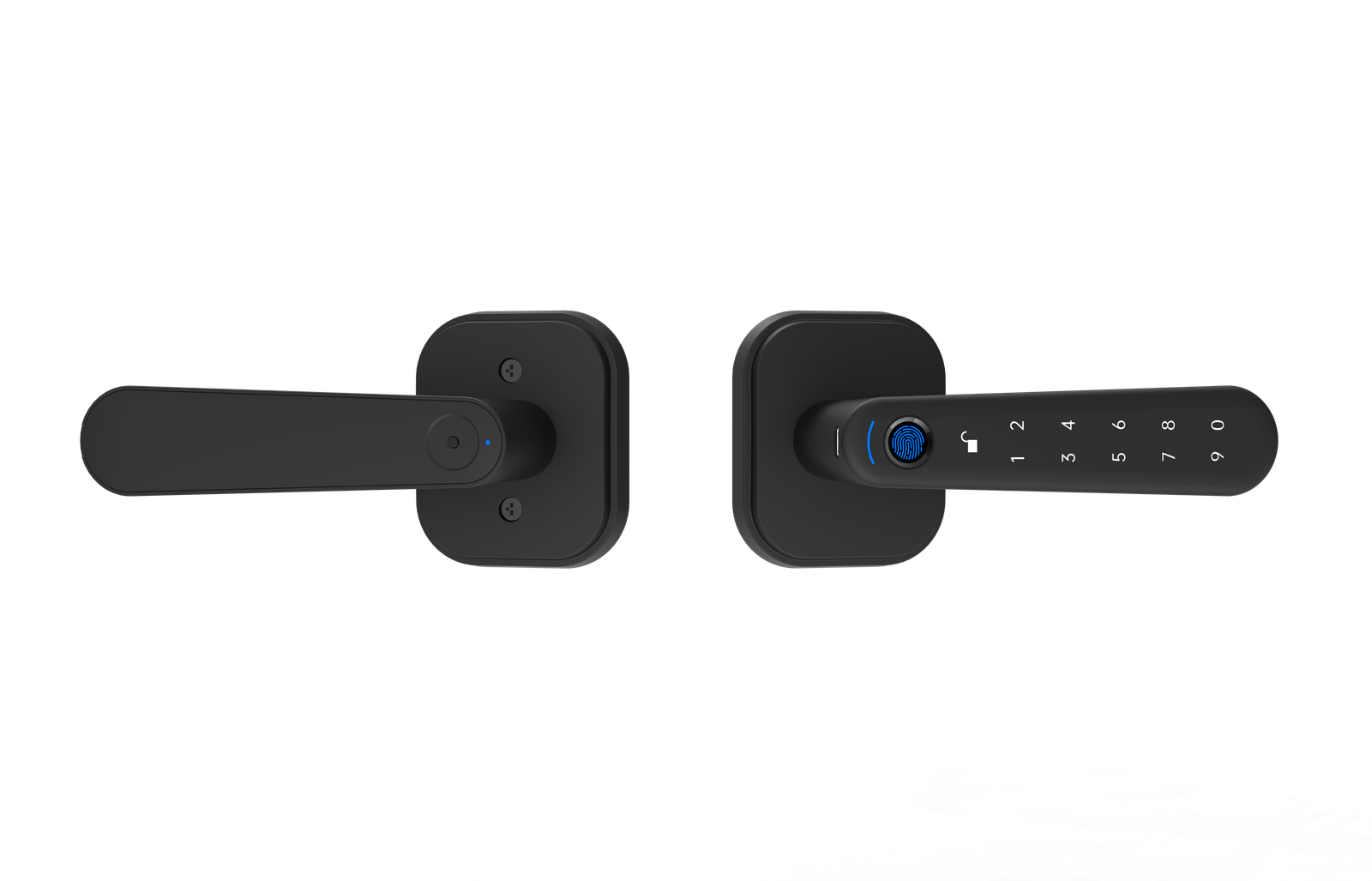
Smart door locks give retailers extra protection for their merchandise. These Grade 1 locks stand up to 360 pounds of force and last through 800,000 open–close cycles. That means fewer break-in attempts and lower repair bills.
You can choose a PIN keypad or a biometric fingerprint sensor (a reader that checks your unique fingertip pattern). And every entry gets a time-stamped audit trail. It’s like having a guard who never blinks.
Ever worry you left the door unlocked? Most smart locks auto-relock after every entry. No more scrambling at closing time.
Need to grant a one-day code to a temp worker? Or revoke access the instant someone leaves? Cloud-based access control syncs user rights across all your locations in seconds. Wireless entry lets you send that PIN from your phone.
Here are the must-have features for your retail store:
- Grade 1 deadbolt (resists 360 pounds of force and 800,000 cycles)
- PIN keypad or biometric fingerprint sensor (checks your fingertip pattern)
- Backup power module (keeps doors locked during power outages)
- Wireless entry via Wi-Fi or Bluetooth for remote unlock, real-time status, and auto-relock
- Durable stainless steel faceplate and weather-sealed case to resist corrosion and vandalism
- UL-certified security parts for daily peace of mind
- Cloud-based access control (syncs user updates across stores)
- Time-stamped audit trails (records every entry and exit)
Wireless entry cuts out messy wiring during remodels. And cloud control keeps all your audit reports in one dashboard. It’s like having all your security info at your fingertips.
Over 10,000 retail stores trust these smart locks.
Comparing Starlight Smart Locks and Competitors for Retail Store Security

Line them up side by side and the difference is clear. Our remote lock status monitoring feels like a quick peek at a security camera feed, but lighter and faster.
We turn usage logs into neat CSV files with time-stamped logs (date and time records). No USB drives or paper piles. You’ll see who came and went in seconds.
Smartphone credential authentication is as easy as tapping to pay. Our native mobile keys show up right in your store app – no extra downloads. Want to know a secret? They set up in under a minute.
Our locks have a built-in NFC reader (tap-to-unlock) with a soft LED glow. It’s a simple tap and a reassuring click.
Check out the smooth metal faceplate. Inside is our capacitive fingerprint sensor (reads fingertip ridges). It barely misses a print. We even offer facial recognition.
Safety extras matter. Magnetic locks instantly release when a fire alarm (emergency fire trigger) hits. Alarm locks send a built-in tamper alert you can mute. So staff stay calm.
Over 10,000 locks installed worldwide.
Firmware updates happen over-the-air with encryption. Our UL-listed power supplies and motion-sensor add-ons give extra muscle. Facility teams spend less time on lock checks and more time with customers and stock.
| Feature | Starlight | Competitors |
|---|---|---|
| Remote lock status monitoring | Secure Wi-Fi and Bluetooth feed with instant alerts | Basic Wi-Fi alerts, no encryption |
| Usage audit report generation | Time-stamped logs (date and time records), exportable CSV from cloud dashboard | Local logs, manual USB download |
| Smartphone credential authentication | Built-in mobile keys in app | Third-party app needed, limited device support |
| NFC-enabled access terminals | Built-in NFC reader (tap-to-unlock) with soft LED glow | Reader add-on kits, no feedback light |
| Biometric authentication hardware | Capacitive fingerprint sensor (reads fingertip ridges), facial recognition option | Optical fingerprint only, slower capture |
| Magnetic lock fire release | Instant fail-safe release on emergency alarm | May stay locked in emergencies |
| Alarm lock forced-entry alerts | Built-in tamper alarm with silent mode | External siren required |
| Firmware updates | Encrypted over-the-air patches | Manual firmware flashes |
Pricing & ROI Analysis of Smart Door Locks for Retail Chains

Retailers get sticker shock when they see a $200 to $500 tag on a single smart lock (a door lock with built-in electronics). Big chains budget $500 to $1,000 per door. Those figures feed into total cost of ownership (all hardware, setup, and upkeep costs) over five years. It’s a simple way to plan ahead.
Monthly subscriptions add $5 to $15 per lock. That fee covers firmware updates (software updates built right into the lock), live lock status checks, and support. If you don’t have an IT team, the SaaS path is a real lifesaver. Seriously, it takes tech worries off your plate.
Wondering when you break even? Our ROI calculator shows cutting theft by 70% pays back in 12 to 18 months. Grade 1 locks last 800,000 cycles (each cycle is a full open and close) and need fewer repairs. Plug in your numbers to see the full picture. Solid.
Want to trim costs? Bulk buys mean 10 to 15% off Starlight hardware. Use those total cost of ownership estimates to compare big orders vs small ones. And next time you launch a new store, revisit one-time buys vs subscriptions. You might snag extra savings.
Installation & Integration of Smart Door Locks in Retail Settings

Modern smart locks plug right into your store’s system. They use API integration endpoints (a software bridge that lets apps talk). It’s like a quiet handshake between the lock and your point-of-sale device. When a sale finishes, you hear a soft LED glow and feel a reassuring click as the door unlocks. No extra button presses. Smooth.
Wiring feels simple with plug-and-play connection harnesses (prewired cables you clip on). Most retrofit kits tuck under the door frame and need no drilling. The smooth metal faceplate blends right in. You barely notice it.
And the UL 325 door operator interface (a standard for door controls) handles the heavy lifting. It keeps your lock and building management system chatting. No dropped signals. Just reliable operation.
Electric panic bar integration (a push bar that opens the door) ensures ADA-compliant egress. Staff can exit instantly with one push. You get a simple toggle switch inside for daily use and a fail-safe exit when it counts.
For fire alarm integration, add a relay module (an electric switch triggered by the alarm panel). When smoke or heat sets off the alarm, the locks pop open in fail-safe mode. Everyone gets out fast. When the alarm resets, the same relay sends an “all clear” and auto-relocks doors. No manual steps.
Here’s a quick integration checklist:
- Set up API integration endpoints in your management portal
- Mount the retrofit kit under the door frame with concealed brackets and plug-and-play harnesses
- Wire relay modules for fire alarm integration and test release timing
- Connect the panic bar switch and verify ADA egress
- Pair locks with your POS so a completed sale unlocks the right door
Smooth installation means less downtime and faster rollouts. Exactly what busy retailers need.
Case Studies: Retailers Securing Stores with Starlight Smart Door Locks

A high-end jewelry chain in New York City installed Starlight smart door locks on its stockroom doors with built-in staff badge readers. The smooth metal faceplate blends right in. Across six stores, they logged 3,200 badge taps in the first month. And theft from within dropped by 60 percent over six months.
Consultants get NFC passes (wireless taps) linked to their badges for quick entry. Managers love the clear audit trail. Every tap logs who, when and where. Solid.
At a local pharmacy, delivery drivers use temporary visitor credentials (time-limited codes) that vanish at closing time. No more key handovers. It shaves minutes off each dropoff. All that shows up neatly in the audit reports.
A mid-size fashion retailer wanted tighter control over back rooms and fitting areas. They set up group access levels (role-based zones) for stock managers, floor supervisors and seasonal staff. Managers assign or remove rights in seconds from the cloud console (online control panel). Temporary hires use mobile keys instead of juggling badges. Audit logs show 5,000+ entries and exits every month. Store leaders say using existing RFID employee cards (radio-frequency identification) cut training time. Lost card? Remote revocation handles it fast. Exactly.
One pharmacy chain had a problem. Some local franchises left doors unlocked after hours. Want to know a secret? Our auto-lock mode is a game-changer. Doors snap shut at closing time. Late-night restockers get PIN codes (short numeric passwords) that expire when their shift ends. Audit logs back up every visit for insurance or compliance. And mobile push alerts ping managers if a door stays open for more than 30 seconds. This extra layer stopped 15 break-in attempts in one year.
Maintenance & Support Best Practices for Retail Smart Door Locks
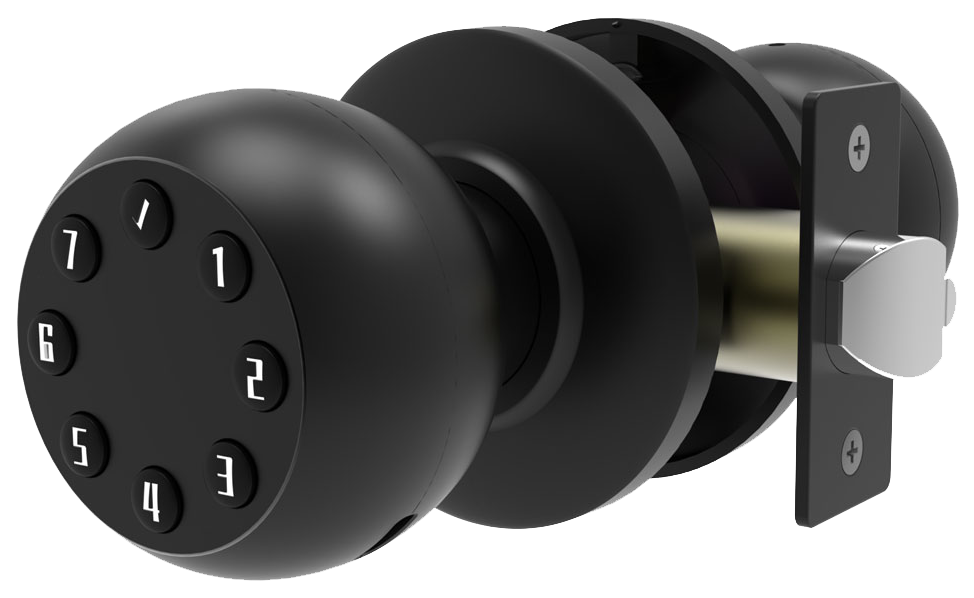
Regular check-ups keep your retail smart door locks humming without a hitch. Each lock has a battery health indicator system (a meter that shows how much power you’ve got left) and a soft LED glow on the smooth metal faceplate. When the battery gets low, your dashboard or mobile app shows a low-battery alert panel so you’re never left in the dark.
On-screen lock health diagnostic tools (software that checks your lock’s motor, sensor, and tamper events) give you a quick status snapshot. Look for stuck latches or odd tamper alerts so you can jump on issues fast.
Predictive maintenance analytics (data patterns that forecast when parts will wear out) feels like a crystal ball. After around 600,000 cycles, you’ll get a nudge to swap out internal modules before they fail. It saves downtime and keeps your doors running smooth.
Set up pro maintenance scheduling alerts (timed reminders for inspections) in your management portal. They prompt firmware updates and biannual safety inspections so no lock gets left behind.
Finally, count on Starlight’s SLA-based support with 24-hour replacement service. Remote diagnostics via our cloud portal lets techs troubleshoot without a truck roll. You save time and avoid headaches. Solid.
Why Starlight Hardware Leads as a Smart Door Lock Manufacturer for Retail
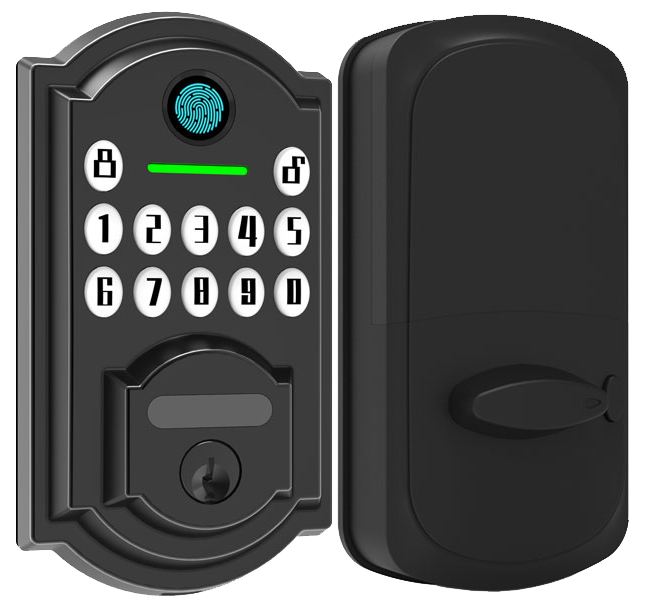
Each Starlight lock has a smooth metal faceplate. It carries CE and FCC certifications (proof it passed tough safety and performance tests). We’re proud of that. Solid.
And we’re ISO 27001 compliant (the gold standard for keeping digital keys safe). That means your credential data stays locked up in a secure cloud vault. Peace of mind.
Final Words
In the action, we explored robust benefits and requirements for smart door locks in retail settings. We sized up Starlight’s features against rivals, from remote monitoring to audit logs and fire-safe releases.
Next we covered pricing, ROI timelines, integration with POS and fire alarms for seamless entry. Case studies and maintenance best practices showed how real shops stay secure without downtime.
The takeaway? Starlight Hardware makes adopting Smart Door Locks for Retail Stores feel smooth and worry-free. Bright future ahead.
FAQ
What are the best smart door locks for retail stores?
The best smart door locks for retail stores feature BHMA Grade 1 strength, keyless PIN or fingerprint entry, and remote management. Top picks include heavy-duty models, glass-door smart locks, and commercial Wi-Fi options.
What is a commercial electronic door lock system and why is it important for store security?
A commercial electronic door lock system uses heavy-duty, weather-sealed hardware with PIN, card, or biometric credentials to resist forced entry. It boosts store security by enforcing unique access, audit trails, and remote tamper alerts.
Are Schlage smart door locks suitable for retail stores?
Schlage smart door locks are suitable for retail stores thanks to heavy-gauge metal faceplates, multiple credential options (keypad, Bluetooth), UL-listed components, and detailed audit logs that fit storefront and glass-door applications.
What types of commercial door locks are available for retail stores?
Commercial door locks for retail include storefront deadbolts, heavy-duty Grade 1 cylindrical locks, glass-door smart locks with slim RFID readers, and keypad or card-access systems with corrosion-resistant casings.
What are the disadvantages of a smart door lock?
The main disadvantages of a smart door lock include battery dependence, occasional connectivity glitches with Wi-Fi or Bluetooth, and higher upfront costs compared to mechanical locks.
What locks do retail stores commonly use?
Retail stores commonly use commercial Grade 1 deadbolts, cylindrical locks with reinforced strike plates, panic bars, and electronic keypads or card readers to meet safety codes and prevent unauthorized entry.
Does Costco sell smart locks?
Costco does sell smart locks from select brands, often offering Wi-Fi or Bluetooth models at discounted bundle prices. Availability varies by season and warehouse location.
Which connectivity is better for smart locks: Wi-Fi or Bluetooth?
Bluetooth suits in-store access with faster response and no router needed. Wi-Fi offers remote control and alerts from anywhere. Choose Bluetooth for local use and Wi-Fi for cloud-based management.
How do you install a commercial keypad door lock?
To install a commercial keypad door lock, align the backplate, drill standard gauge holes, mount the metal faceplate, connect power or battery pack, and program PIN codes per the manufacturer guide.
What are card access door locks and how do they work?
Card access door locks use RFID or magnetic stripe readers to grant entry when a credentialed card is presented. They log entry times, support temporary badges, and integrate with building management.
